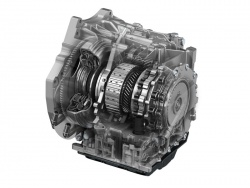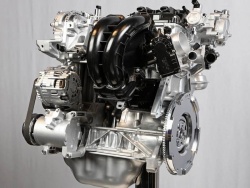 Mazda Skyactiv automatic transmission. Click image to enlarge |
|
Related links
Manufacturer’s web site |
By Greg Wilson
Photo Gallery:
Mazda Skyactiv technology
“Skyactiv” is Mazda’s fanciful term for the company’s next generation powertrain and chassis technologies designed to improve vehicle performance, safety, fuel economy and emissions. The company’s stated goal is to improve corporate fuel efficiency by 30 per cent by 2015, compared to 2008 levels. Skyactiv upgrades to its vehicles will begin this year in Japan with the Mazda2, and in Canada later this year with the 2012 Mazda3 and the new 2012 CX-5. Though Skyactiv will include future hybrid and electric vehicle technology, for the immediate future, the changes are to conventional internal combustion engines, transmissions, unit body platforms, suspensions and steering systems.
 Mazda Skyactiv diesel engine. Click image to enlarge |
“Mazda is renewing its entire powertrain and platform line-up at the same time as revolutionizing every manufacturing process from R&D through to mass production,” said Takashi Yamanouchi, Mazda’s Chairman of the Board, President and CEO. As if to reassure us that we won’t have to make any sacrifices, he added, “There have been no compromises in addressing conflicting goals.”
In Part 1 of our look at Skyactiv, we examined Mazda’s advances in engine technology, especially the planned introduction of Mazda’s improved diesel engines into North America next year. This week, we’ll take a look at Mazda’s advances in transmission, body, chassis, suspension and steering technologies.
Mazda’s new six-speed automatic transmission will be lighter and more compact than the company’s current automatic and will contribute a four to seven per cent improvement in fuel economy, according to transmission engineer, Toshihisha Marusue.
There will be two types of automatic transmissions: one able to handle up to 200 lb.-ft. of torque and another capable of handling up to 340 lb.-ft. They will both include a smaller torque converter for starting only and a multi-plate clutch for a more direct, connected feeling. As well, a new “Mechatronics” module in the transmission will combine the hydraulic control module and the ECU. Shift times of just 150 miliseconds will be faster than a dual-clutch transmission, according to Marusue.











